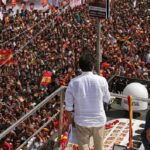What had been a perennial political strike, Ladakh, the high altitude cold desert which lies along the Line of actual control against China turned into lethally violent protests right at the end of September 2025. On September 24, 4 died and dozens more wounded, in fights between protesters and security forces in Leh. The violence capped a period of months-long agitation which demanded constitutional guarantees and statehood and a hunger strike organized by high profile activist Sonam Wangchuk. The Union government has accused the activists with provocative speech of instigating violence with local leaders indicating that the eruption is the logical result of the decisions of New Delhi in policies and broken promises over the years. There are independent rights groups and analysts calling for unbiased investigations.
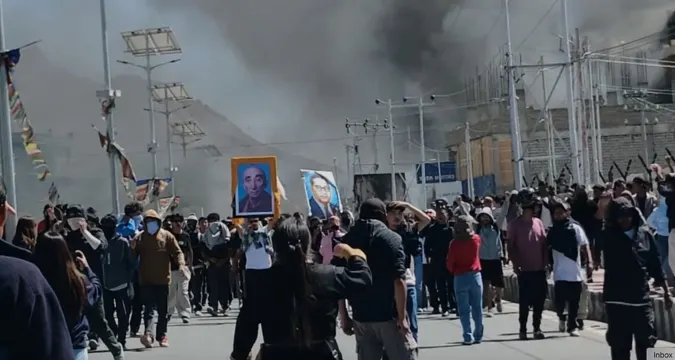
The following is an evidence based description of how Ladakh has gotten this crisis, what actually went wrong, in whose hands have the poor legs so far blamed them, and a realistic way out back to de-escalation and long-term political reconciliation.
Quick Facts
- General Information What took place: The violence in Leh on September 24 2025 resulted following protests that demanded statehood and constitutional protections. There were deaths of four civilians and dozens more were injured. The government imposed a curfew and arrested numerous protestors, including Sonam Wangchuk.
- Immediately triggered a hunger strike by activists, which started September 10, and the hospitalization of two hunger strikers, reported September 23. On September 24, during escalation, there was an arson of a local BJP office and security personnel were attacked. The government states that the police were acting in self defence. The local authorities require a court investigation.
- Other factors, including the revocation of Article 370 in 2019 that prompted the loss of autonomy, the adoption of Ladakh as a Union Territory with no legislature, repeated local demands on constitutional guarantees (including inclusion in the Sixth Schedule), concerns about land and demographic change, and enduring youth unemployment and ecological strain, are all root causes.
- International background: this is also the arena of the India China military confrontation that reached its peak with the fatal indoor conflict at Galwan (June 2020) that altered the security equity of New Delhi and local politics.
The Role of this Crisis Origin and Its Development
The institutional context: 2019 and the fault lines in governance.
This political structure, which exists immediately, was built in August 2019, when New Delhi nullified Article 370, and Parliament enacted the Jammu and Kashmir Reorganisation Act 2019. This law came into force on October 31 2019 and divided the former state into two Union Territories. Ladakh was incorporated as a centrally governed Union Territory without a legislature. It was a given change welcomed by many people in Leh since it unleashed domination in Srinagar but on others, notably in Kargil and a group of other people within the civil society of Ladakh, the change left a weak point. There was a vacuum in governance because the Ladakh region lacked an elected legislature and it also changed its policies at an alarming rate that was facilitated by the government at Delhi.
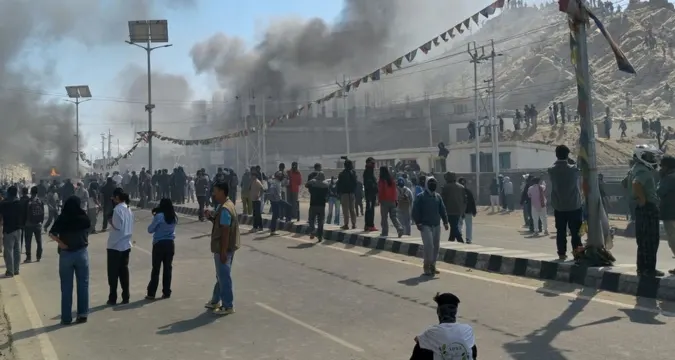
The current anger is based on that deficit. Greater constitutional safeguards against Ladakh, such as those provided by the Sixth Schedule to tribal and frontier regions to secure more authority over land, natural resources, administrative choices, and so forth, have been long sought after by local civic organizations like the Leh Apex Body and the Kargil Democratic Alliance. These pressures got even more acute following the 2019 reorganisation as land decisions, and investment and local employment were now directly determined by centrally appointed personnel and no longer by a locally elected assembly.
The security Overlay: China, Galwan and Militarisation
Ladakh is not just a political issue, it is a hotbed of security. In the standoff between India and China in the eastern part of Ladakh, in the Galwan Valley confrontation on June 15 2020, the Indian state shifted their strategic stance. The encounter, involving a huge Indian loss of life, and which made Ladakh disturbed or discovering the extent to which the frontier has been contested and armed, subjected the territory to the growing security localisation. Since 2020, daily life has included troop deployments, forward infrastructure, and limitations on civilian movement. Making economic life, land use and local sentiment and making routine governance decisions that are much more charged, such security dynamics.
The chronological sequence that culminated into the violence that occurred on the 24th of September.
- September 10 2025: Sonam Wangchuk embarks on a mass hunger strike demanding Sixth Schedule rights and statehood. It was through these very few years that he emerged as a recognizable figure, who demanded constitutional protection and environmental conservation in Ladakh.
- September 23 2025: It became stressful due to reports of two individuals on fast being hospitalised and worries regarding the wellbeing of the hunger strikers. Local organisers demanded a shutdown and protests.
- September 24 2025: In Leh, a violent large protest march occurred. There were demonstrations by some protesters who burnt a vehicle of the paramilitary system and the regional office of the Bharatiya Janata Party. Tear gas was used by the police and paramilitary forces as well as baton charges and was reportedly firing at the crowd. There were at least four civilians who were killed and many others wounded. Governments put an embargo on associations and communications. The government accused them of instigating trouble through inflammatory speech and postings on social media.
- September 25 to 29 2025: Curfew continued in some of Leh. The police reported that they fired in self defence and the government announced that several people who participated in the violence were arrested. The Ministry of Home Affairs sent a press note that clearly criticised Sonam Wangchuk, the department spearheaded this by stating that he made provocative speeches as well as violating his fast without pacifying the mob. It was reported by some media and rights groups that Wangchuk was further detained and that registration of his NGO at FCRA was even cancelled. The Leh Apex Body and other local organizations were demanding a judicial investigation, and withdrew talks with the Centre until its demands, and detainees were met. Human rights organisations requested a separate investigation on the deaths and condemned the force.
Who is at Fault? Leadership Using Objective and Unbiased Allocation of Accountability
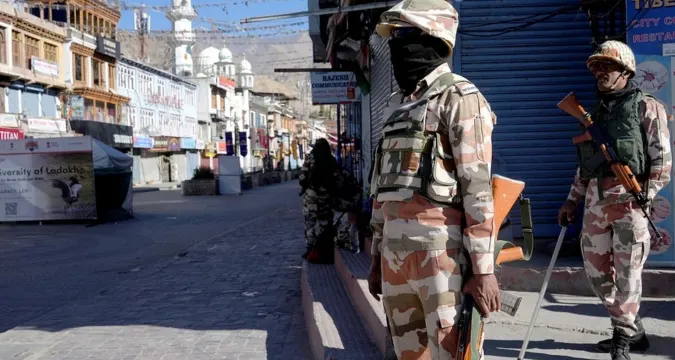
Whether or not someone is in the wrong is not a strictly partisan or rhetorical issue. There are several causes of events that are both immediate and structural. According to the official statements, reporting, resolving the problem, and the independent analysis, the evidence confirms the following distribution of the responsibility.
- The big responsibility extends to the policy choices undertaken by the central government.
The very structure of Ladakh, which is designed as the Union Territory without a legislature, is one of the most important political choices made by the Narendra Modi government in 2019. That option both centralized the administrative authority in New Delhi and eliminated a major local political decision making platform. The lack of a domestic legislature has ensured that complaints which raise difficulties requiring a legislative or constitutional redress, like those under the Sixth Schedule, have been sluggishly addressed via democracy. The consequence here is structural political resentment which helped to mobilise the 2025 efforts. This is a political duty of the central ruling party during the reorganisation.
This is not speculation. The aspect of the centralised form, together with the calls of Sixth Schedule protections, which the Leh Apex Body and Kargil leaders have reiterated on, have been put into perspective as the primary grievance element by the region. A major political reason behind the agitation is therefore the continuing stalling of serious constitutional accommodation.
- Interventions of local organisers and a few protestors added to the flashpoint.
Smaller organizers like Sonam Wangchuk have played a significant role in maintaining government awareness of the needs in Ladakh, as well as mobilizing youth activism, stolen tips and sit-ins. After the day of violence, the central government charged that some of the stated and videoed statements led to incitement. Part of the recent sudden increase can be ascribed to the provocative speeches and to the actions that resulted in incendiary operations at a party building that a spokesperson of the Ministry of Home Affairs attributes. All these are statements that are lessee official and upon which the state has been utilizing arrests and prosecutions. Since these are communications that can be accessed by anyone, they constitute a part of the evidentiary record and they need to be examined as part of an objective investigation.
- Security forces are charged with the employment of lethal force.
The police have been said by independent rights organisations to have fired their rounds and parched protesters and that they killed four civilians in the event. The deaths have been highlighted by Human Rights Watch, for example, which has demanded an independent investigation as to whether lethal force was required and proportionate. International standards and Indian jurisprudence specify that police must be able to effectively justify lethal force as a necessary last resort under India law, which permits the use of force in self defence. Now there are plausible claims to medical and ballistic proofs, clear accounts of instructions issued to security agents and prompt judicial review. These are measures necessary to assign operational responsibility as well as to account.
- Party accountability.
The question is not which political party is politically accountable; it is mainly the political party in power in the Centre. Led by the Bharatiya Janata Party, the legislative and executive measures took place to repeal Article 370 and resettle the former state in 2019. That was the beginning of the protracted series of complaints to which local bodies are now giving voice. It is therefore the duty of the BJP as the political party in the governance gap to make policy decisions that contributed to the gap. Simultaneously it is worthwhile to separate policy responsibility and immediate operational culpability of the deaths on September 24. The latter aspect of policing and law enforcement is an issue that should be investigated by itself and is not worthy of judgement based on the party affections alone.
The Lawful and Administrative Steps that the Centre followed and their Effects
In its prompt reaction Delhi called the violence and said it was caused by inciting speeches and made arrests. Government press releases claimed to engage with a High Powered Committee previously but said illegal activities were a crossing of the line. Authorities referred to criminal provisions and, based on some reports, administrative means including de-registration of an NGO under the Foreign Contribution Regulation Act. Invocation or discussion of harsh detention laws has also been reported, in some cases. Civil society stakeholders complain that the decision to resort to harsh penalties, without court investigation, also runs a risk of politicizing law enforcement agencies and increasing alienation.
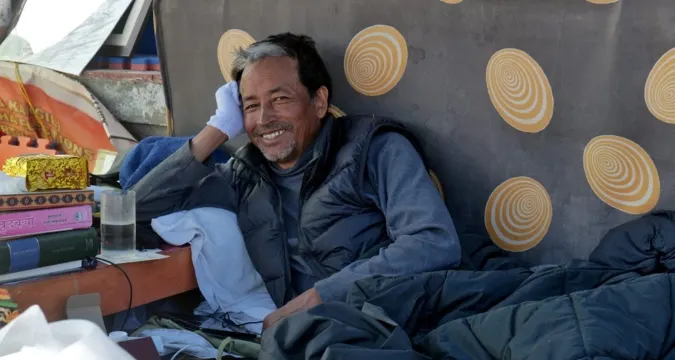
Human rights groups have demanded a judicial commission led by retired Supreme Court justice, medical and ballistic openness and free forthwith publication of those in custody without viable accusations. According to the local bodies, they will not engage in negotiations until such conditions are fulfilled. Those impasse stand the danger of transforming a short term law and order situation into a lengthy political discontinuity.
The importance of this outside of Ladakh
It is not a regional story. Ladakh is a consultation point between national constitutional issues and international politics of security. Ladakh is a geopolitically sensitive area due to the geopolitics of the India China boundary, the militarised border, as well as the scars of the Galwan confrontation in 2020. Strategic and human immediate effects of domestic political alienation in such a place are both present. The inability to appease local grievances amicably and legitimately through peaceful political means could lead to instability in a region just in case of strategic defence infrastructure.
Checked recommendations on short run relief and medium term resolution.
The steps at a practical, implementable level below are the pattern of causes which result in minimizing the likelihood of increased bloodshed.
- Quick stand-alone investigation and disclosure. The greatest urgency is to have independent, expedited judiciary investigation by a retired Supreme Court judge with ability to force medical records, ballistic reports as well as witness probing. The investigation must both publish its preliminary results and prescribe responsibility where there are no recommendations. This will help it curb an immediate shortage of legitimacy, as well as eschew partisan-driven narratives.
- Priority review of the cases against non violent political protest that would grant release and due process to the detainees. Triage cases should be given a quick adjudication based on clearly political protests or a non violent civil disobedience. Hard detention or arbitrary detention will be a source of rebellion.
- Restart plausible political dialogue with local leadership with neutral facilitation: To achieve peace in Leh, Delhi needs to provide systematic negotiations with the Leh Apex Body and the Kargil Democratic Alliance, with deadlines, specific outcomes and the way to control a process will be done. The previous structure of the High Powered Committee at the Centre might be retained but complied with time limits and accountability to the citizens.
- Think about constitutional redress which trims down to the grievance: The Sixth Schedule presents an experimented formula on how autonomy and protective measures to frontier tribal areas should be formulated. An implemented time-restricted technical investigation that would be developed in co-operation with community leaders, lawyers and the Ministry of Home Affairs should research the question of whether Sixth Schedule type of safeguards, or some specific hybrid arrangement, can fulfill the desires of Ladakh, and at the same time, retain national cohesion. This study and political record of a timeline to make decisions would reduce current uncertainty.
- Ecological and economic indicators that provide physical advantages to youths. Possible short term job assurances, local hiring intent in the government ventures, and a controlled strategy of regulating unmanaged tourism and conservation of pastoral lands will diminish the envy over wealth, which consolidates protest.
- Security force building. A well-conceived set of rules of engagement, better training on non lethal methods of managing the crowd, and unbiased self-examination of the after action will provide the biggest boost to regaining the confidence of the population in policing.
Conclusion
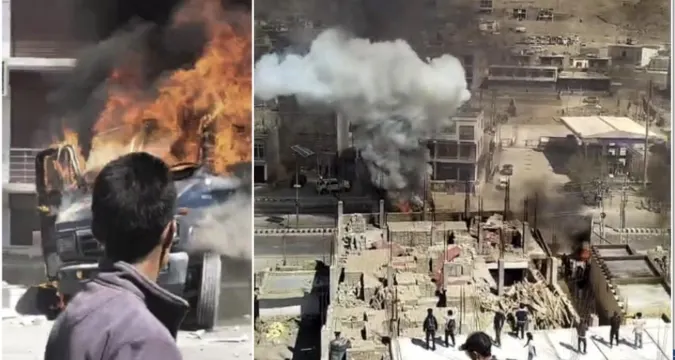
First Ladakh is not simply violent. The developing result of systematic political decisions, neighborhood socio economic disquiet and a rough precipitate controlled by hunger strike and a demonstrative mess. On the political level the primary role lies with the concerned authorities who restructured Ladakh without providing the local democratic buffers that might absorb the political changes. Operationally the security forces should demonstrate how lethal force was the final end, laid down as a last resort. This is the responsibility of activists and other local leaders to arrange and prove orderly and not to use words that create violence. Most important of all the road out of this crisis is political not in itself punitive. An investigation to be believed in, immediate disclosure, liberation of wrongly arrested individuals and a swift negotiated, jointly mediated venture that offers protection of rights due by the constitution and employment can neutralize the current threat of concern and facilitate a more durable political accord.
The main sources and reports applied in this article.
- On the subject of the September 2025 mayhem and the 2020 Galwan clash, Reuters analysis and on-the-ground coverage. Reuters
- Background of the Jammu and Kashmir Reorganisation Act 2019, effective date of October 31 2019, by Press Information Bureau. Press Information Bureau
- Press release by the ministry of home affairs and government comments after the September 24 unrest in Ladakh. Press Information Bureau
- Human Rights Watch press release that requested an independent investigation of the killings and the use of lethal force.





